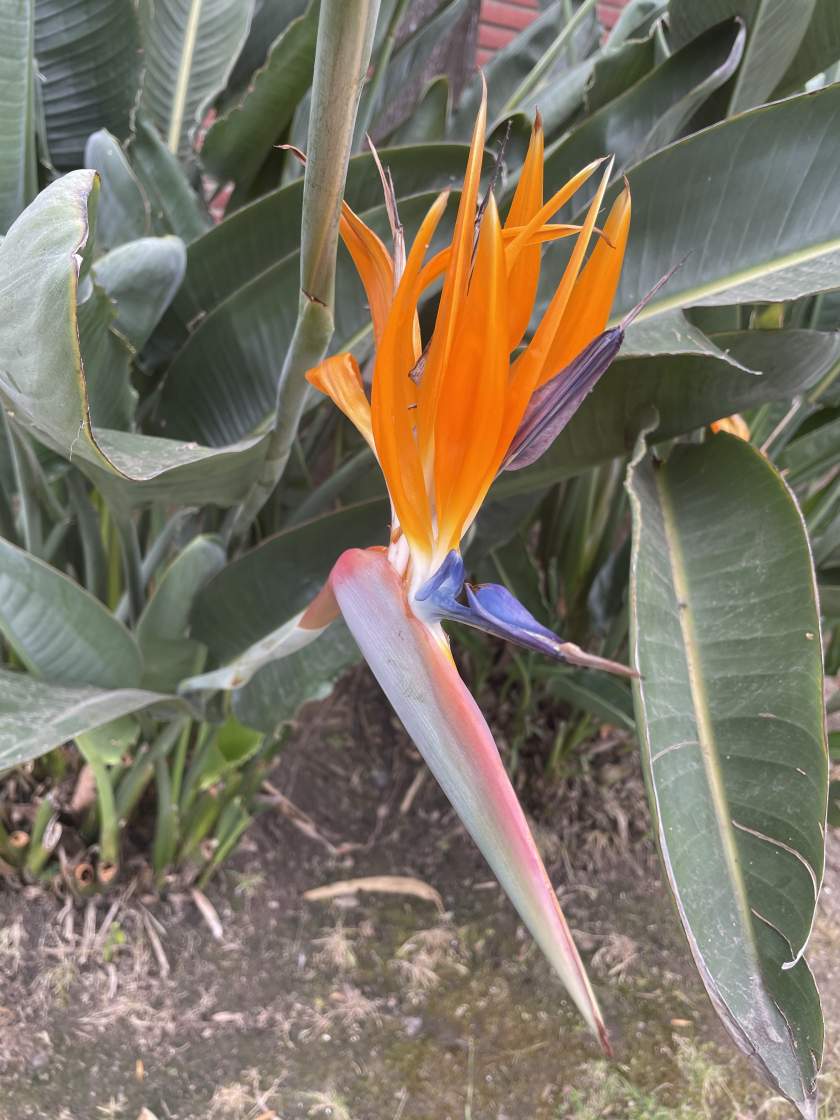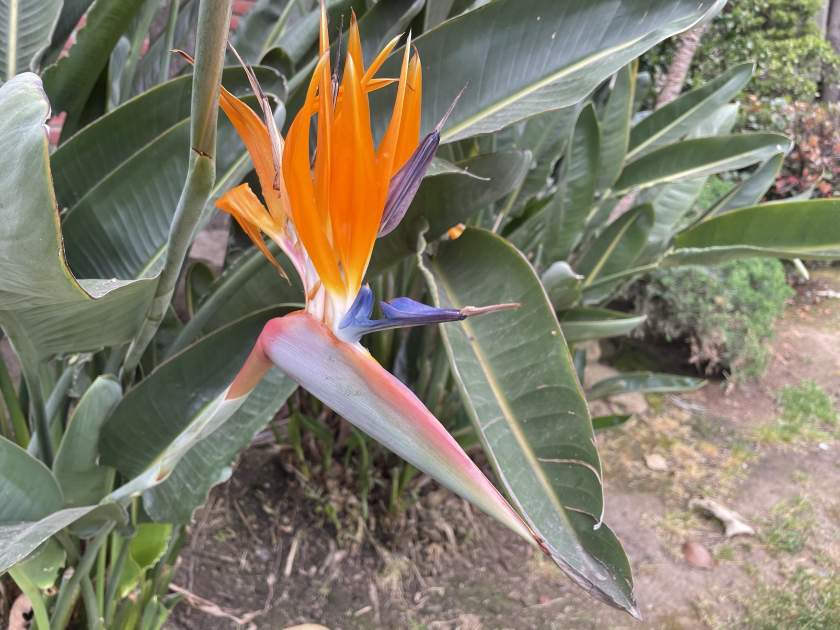Strelitzia reginae: Unveiling the Majestic Bird of Paradise
Strelitzia reginae, commonly known as Bird of Paradise, Strelitzia, Crane Flower, or Bird of Paradise Flower, is one of the most well-known and iconic plants in the world. Belonging to the Strelitziaceae family, this bold structural plant forms large evergreen clumps of stiff leaves that grow up from the base, creating a striking presence in any landscape or interior setting.
Characteristics and Description
Strelitzia reginae is known for its unique and captivating features. It boasts grey-green, banana-like leaves that can reach a height of 3 ½ to 4 feet. The flowers of Strelitzia reginae are particularly fascinating. They emerge from a hard, beak-like sheath called a spathe, which is placed at right angles to the stem, resembling a bird’s head. The flowers consist of three brilliant orange sepals and three bright blue petals, with two of the blue petals, joined together to form an arrow-like nectary. This intricate structure plays a role in the plant’s pollination, as visiting birds get their feet covered in pollen while drinking nectar.
Origin and Varieties
Strelitzia reginae is native to the southern and eastern parts of the Cape Province and northern Natal in South Africa. While Strelitzia reginae is the most common and widely cultivated species, there are other species within the Strelitzia genus, such as Strelitzia nicolai and Strelitzia juncea, each with its own unique characteristics and appeal.
Flower and Leaf Description
The flowers of Strelitzia reginae are a visual marvel. They consist of vibrant orange sepals and blue petals, arranged in a striking display atop tall stems. Individual flowers last for about a week, but the spathe holds 5 to 7 flowers, ensuring a prolonged blooming period. The large, glaucous leaves of Strelitzia reginae resemble those of banana plants, adding to its allure even when not in bloom.
Cultivation of Strelitzia reginae:
Climate: Strelitzia reginae thrives in warm, tropical climates and is hardy in USDA zones 10 to 12. It can be grown outdoors in a frost-free location with protection from strong winds. If exposed to freezing temperatures, the foliage may be killed, but the plant can slowly rejuvenate over 18 to 24 months if the root system remains intact. In cooler climates, it can be grown as a houseplant or in a greenhouse.
Sunlight: Strelitzia reginae thrives in full sun to partial shade. While it prefers full sun, providing some afternoon shade in hot, direct sun can protect it from scorching.
Watering: This plant prefers consistently moist soil, but it can tolerate short periods of drought. Avoid overwatering, as it can lead to root rot. Allow the soil to dry out slightly between waterings.
Soil: Strelitzia reginae prefers well-draining, slightly acidic soil that is rich in organic matter. However, it can also tolerate slightly alkaline soil.
Pest/Disease: Strelitzia reginae is relatively resistant to pests and diseases. However, common pests such as mealybugs, scale insects, and spider mites may occasionally appear. Treat them with insecticidal soap or neem oil. The plant can also be susceptible to root rot and leaf spot, which can be prevented by ensuring proper drainage and using fungicides if necessary.
Propagation: Strelitzia reginae is commonly propagated through division or by using suckers produced at the base. Spring is the ideal time for division.
Interesting Facts about Strelitzia reginae:
- Strelitzia reginae is highly versatile and can be used as a focal point in the garden, in borders, along walkways, in patio containers, or as a houseplant.
- It is drought-tolerant once established and can withstand extended periods without irrigation.
- The bird of paradise plant is also known for its air-purifying properties, making it a popular choice for indoor spaces.
- In addition to its ornamental value, Strelitzia reginae has been used for medicinal purposes by indigenous peoples in South Africa.
- It is deer and rabbit resistant, but it is toxic to dogs, cats, and horses.
Growing Bird of Paradise:
Pruning: Regular pruning is not required for The Bird of Paradise. In the spring, remove any old or damaged leaves by cutting them down to the base with sharp secateurs.
Repotting: Mature Bird of Paradise plants should not be repotted frequently, as their fleshy roots are easily damaged. Repot only when necessary.
Propagation: Bird of Paradise is typically propagated through division in the spring or by using suckers produced at the base of the plant.
In conclusion, Strelitzia reginae, or Bird of Paradise, is a remarkable plant that brings a touch of tropical beauty to gardens and indoor spaces. With its bold structure, striking flowers, and low-maintenance nature, it is a versatile choice for various landscaping and decorative purposes. Whether used as a focal point, border plant, or houseplant, Strelitzia reginae adds an exotic and captivating presence wherever it grows. By providing the right growing conditions and care, gardeners and plant enthusiasts can enjoy the resplendent beauty of the Bird of Paradise for years to come.





